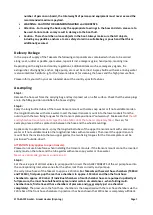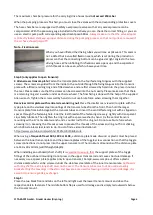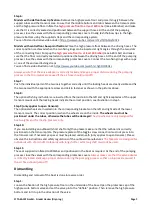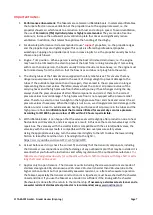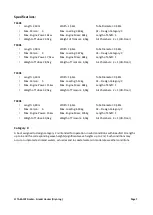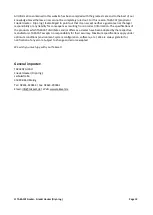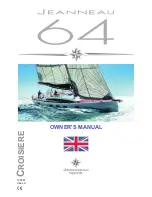
© TAKACAT GmbH - Friedel Hacker (Dipl.-Ing.)
Page
6
Step 2 (only applies to open transom):
Now open the fixing screw of the transom plate and remove the two transom plates.
Step 3 (only applies to open transom):
First pull the upper and then the lower transom mount out of their tube guides.
Step 4:
First open the front hose valves and let the air out. Then open the rear hose valves. When no more air
comes out, lay the rear third of the hoses towards the bow and then the front third of the hoses towards
the stern. Now the driving hoses are shortened to one third of their former length. Now roll up the driving
hoses from the side. Then you can put the bag over the top, roll it 180° and carefully close the zipper. When
closing the zipper, always make sure that there is no tension on the zipper, so that no damage to the closing
teeth occurs.
Step 5:
All accessories including the high-pressure base and any slip wheels can be stored in the accessories bag.
Packing in the carrier bags:
The folding technique of the carrying hoses depends on which
pocket format was delivered:
Square pocket size
=>
https://www.youtube.com/watch?v=JbTiTftEfwI
Rectangular pocket size
https://www.youtube.com/watch?v=nQN5AoGyP1M
anchoring
Only use the tow rings at bow and stern for towing. The same applies to anchoring. An anchor suitable for
the anchorage ground must be used.
Lenzing device
The 260S with closed transom has a bilge valve, positioned in the centre, in the lower part of the transom.
The bailer valve is opened and closed vertically - Extended upwards = open / retracted downwards = closed.
The bilge valve must be checked for correct operation before each journey. Water that has entered the boat
can flow out of the boat again by opening the bilge valve. The bilge valve must only be open when the boat
is sailing, otherwise there is a possibility of water entering the boat via the open bilge valve. Only when the
lower edge of the transom is above the surface of the water can the bilge valve be opened to allow water to
flow out even when the boat is stationary. If there is a large amount of water in the boat, the water must be
scooped out of the boat with a bailing ladle, which must always be on board.
All SPORT models with open transom are self-draining!



